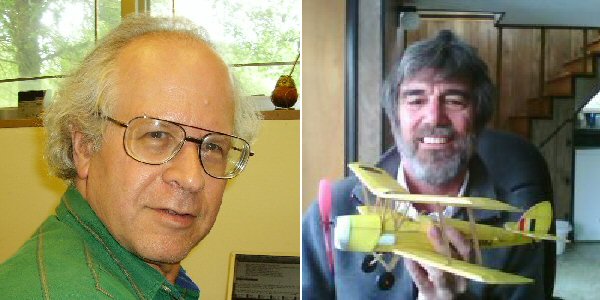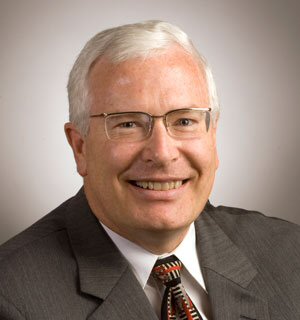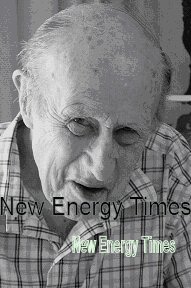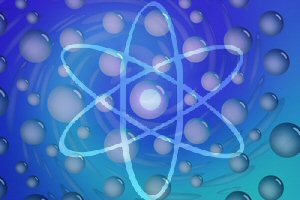
Oak Ridge Nuclear Cavitation Confirmation
July 19, 2013 – By Steven B. Krivit –
This is Part 2 of “2001 Oak Ridge Nuclear Cavitation Confirmation Uncovered.”
This is a New Energy Times Special Report. The first part of this series published on July 18, 2013.
Introduction to the Oak Ridge Nuclear Cavitation Experiment
The essential part of the Taleyarkhan group’s nuclear cavitation experiment is a custom-blown glass chamber similar to the one shown below.
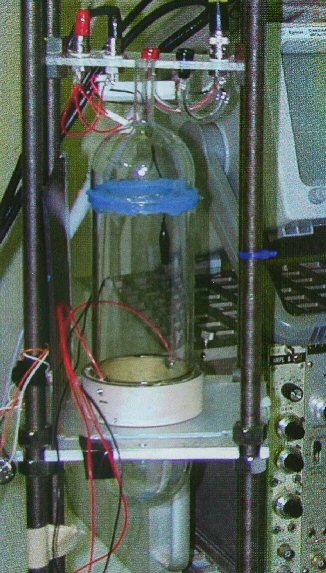
Acoustic chamber similar to that used by the Taleyarkhan group at Oak Ridge National Laboratory in its nuclear cavitation experiments.
The chamber is filled with a test fluid, deuterated acetone, or, in the case of control experiments, normal acetone. Two stimuli react on the chamber. The first is an ultrasonic acoustic wave produced by a piezoelectric driver ring that induces cavitation; the second is a source of energetic nuclear particles that can seed the growth of bubbles. In the Taleyarkhan group’s first experiments, those particles were neutrons from an external device called a pulse neutron generator (PNG), which emitted neutrons in the direction of the chamber in precisely timed intervals.
The acoustic input causes high compression in the chamber, and this leads to a series of rapid bubble growths and collapses. At the collapses, observers see light flashes, a phenomenon known as sonoluminescence.
The Taleyarkhan group summarized the mechanics of the reaction in a 2009 review paper.
“The test liquid is placed in a cylindrical glass test section and driven harmonically with a lead-zirconate-titanate (PZT) piezoelectric driver ring attached around the outside surface of the test section,” the authors wrote. “This induces an acoustic standing wave in the test section.”
“The intense implosive collapse of bubbles, including acoustic cavitation bubbles,” the authors wrote, “can lead to extremely high compression-induced pressures and temperatures from shock heating and to the generation of the light flashes known as sonoluminescence (SL). In addition, the violent implosions of bubble clusters produce audible shock waves.
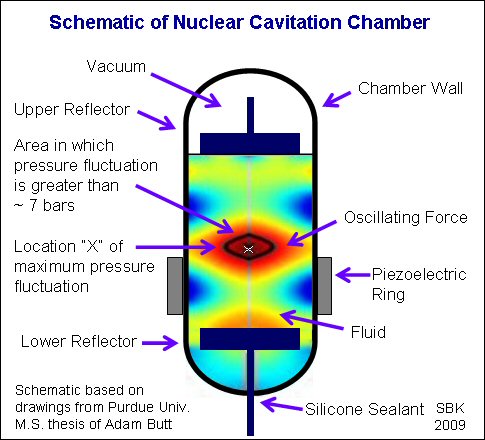
Schematic of Nuclear Cavitation Chamber
The Taleyarkhan group’s use of multi-bubble sonoluminescence rather than single-bubble sonoluminescence, which was used by its competitors, is the most significant improvement in its method.
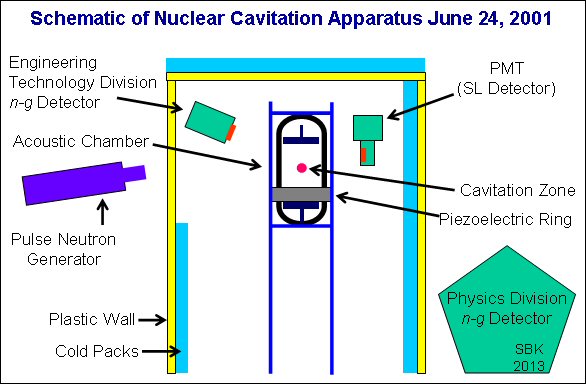
Schematic of the Taleyarkhan group’s experimental apparatus in the Engineering Technology Division, on June 24, 2001, when Dan Shapira, from the Oak Ridge Physics Division, set up his neutron detector to independently measure the emitted neutron flux.
Here is a short video clip of a nuclear cavitation experiment performed at Oak Ridge. Each visible event is not an individual bubble but rather clusters of hundreds of bubbles.
Next Part: The Scientific Evidence
Questions? Comments? Submit a Letter to the Editor.


